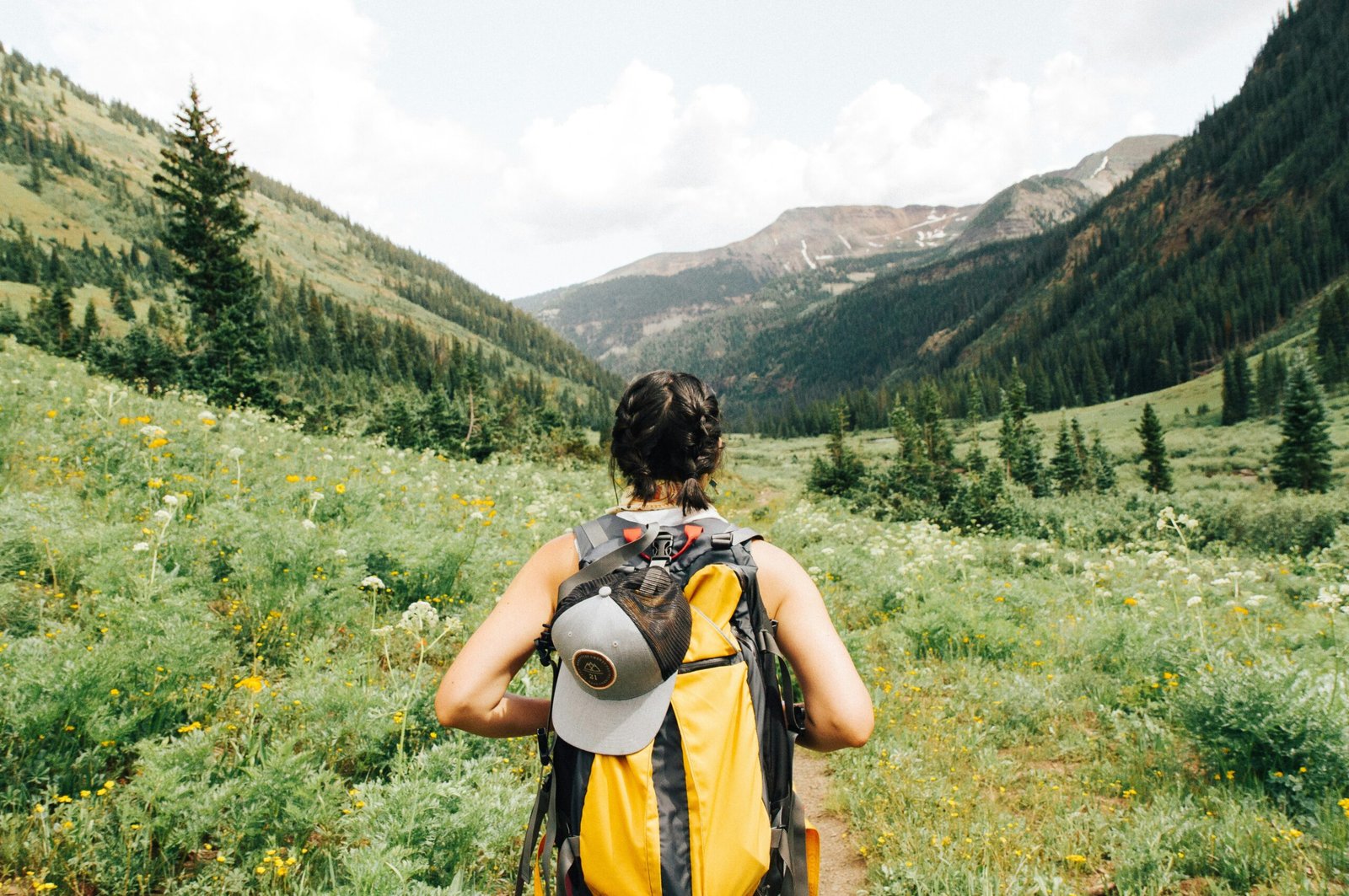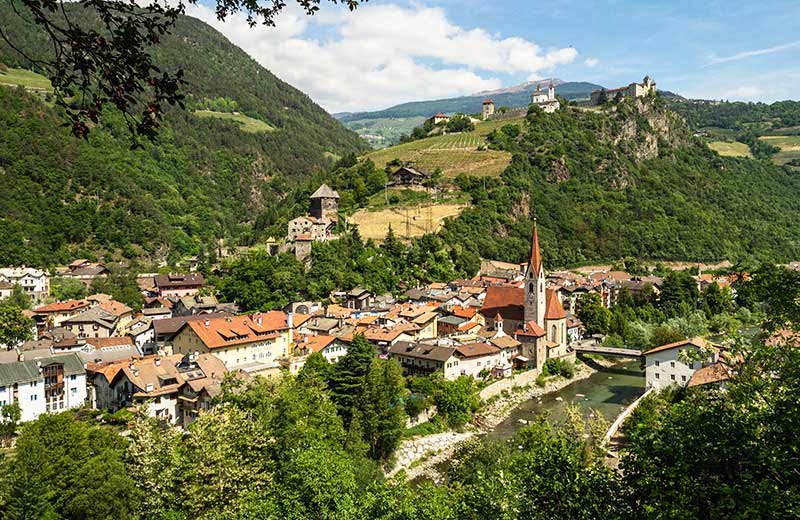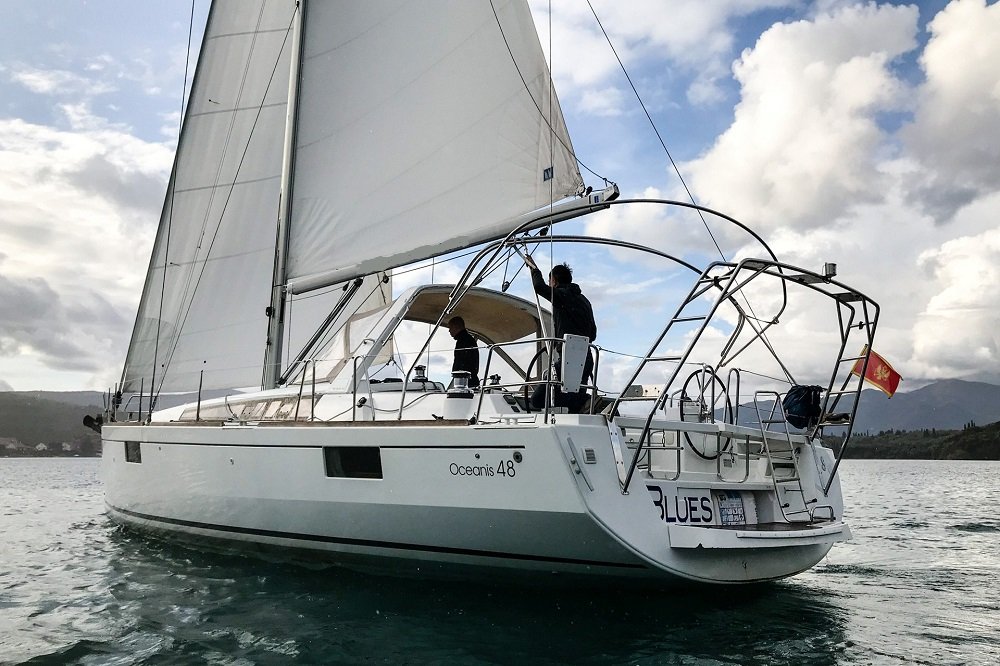Introduction to Off-the-Beaten-Path Travel
Off-the-beaten-path travel refers to the exploration of destinations that are not typically found in mainstream tourist itineraries. In the context of Peru, this concept unveils a treasure trove of unique experiences that lie beyond the shadow of popular attractions like Machu Picchu. The allure of hidden gems often rests in their ability to provide travelers with authentic cultural insights and a deeper understanding of the local way of life. Engaging with these lesser-known locations allows individuals to absorb the rich tapestry of Peru’s diverse heritage, tradition, and landscape.
One of the primary advantages of seeking out off-the-beaten-path experiences is the chance to encounter unique cultural interactions. Travelers can engage with local communities that maintain traditional lifestyles, participate in age-old customs, or enjoy regional cuisines that might not be widely available elsewhere. Such genuine connections often lead to enriching stories and unforgettable memories, fostering a sense of appreciation for the intricacies of Peruvian life.
Additionally, these hidden gems tend to attract fewer tourists, which can significantly enhance the travel experience. With fewer crowds, visitors can explore environments that feel more intimate and personal. This tranquility allows for reflection and deeper appreciation of the beauty surrounding them. The authentic encounters gained at these sites can make for a more rewarding journey, elevating one’s travel beyond superficial sightseeing.
Moreover, as travel enthusiasts grow ever more connected through social media and travel blogs, the importance of discovering and booking off-the-beaten-path experiences has become more pronounced. These opportunities not only enrich one’s travel journey but also contribute to sustainable tourism practices that benefit local economies. Embracing such travel can lead to meaningful adventures that truly define the essence of exploration in Peru.
Understanding the Landscape of Peru
Peru is a nation rich in diverse geography and cultural heritage, far beyond its most famous landmark, Machu Picchu. Nestled on the western coast of South America, Peru boasts an extraordinary variety of landscapes that significantly influences the adventure and cultural experiences available to travelers. This geographical diversity spans three primary regions: the coastal areas, the Andean highlands, and the Amazon rainforest.
The coastal region, known as the Costa, features arid deserts and beautiful beaches along the Pacific Ocean. This area is characterized by its unique ecosystems, where travelers can explore vibrant marine life, engage in water sports, or indulge in the unique flavors of Peruvian cuisine. The capital city, Lima, offers a perfect blend of history, modernity, and gastronomy, while also serving as a gateway to discover lesser-known treasures along the coast.
Transitioning from the desolate coast, the Andean region emerges with its dramatic mountain ranges, including the towering Andes. This area is particularly notable for its stunning trekking opportunities, such as the Salkantay Trek and the Inca Trail, which lead adventurers through breathtaking vistas and ancient ruins. The highlands are also home to numerous indigenous communities, preserving rich cultural traditions that offer visitors a chance to engage with local customs, crafts, and rituals in a way that transcends conventional tourist experiences.
Lastly, the Amazon rainforest represents yet another vital piece of Peru’s geographical puzzle. This lush and biodiverse area is teeming with exotic wildlife and plants, creating a tantalizing backdrop for eco-tourism and adventure activities such as jungle trekking, bird watching, and river cruises. Many travelers venture into the depths of the Amazon to connect with local tribes, gaining insights into their way of life and sustainable practices. Ultimately, the varied landscapes of Peru not only enhance the availability of unique experiences but also weave a rich tapestry of culture and adventure that invites exploration beyond the typical tourist path.
Researching Hidden Experiences
Finding off-the-beaten-path experiences in Peru requires a thorough approach to research that combines multiple resources for the best results. One effective strategy is to utilize online resources such as travel blogs, forums, and social media platforms. Websites like TripAdvisor, Lonely Planet, and specialized travel blogs often provide valuable insights into lesser-known attractions. Engaging with local travel bloggers who focus on Peru can yield hidden gems that are not typically featured in mainstream travel literature. These blogs often share personal anecdotes, lesser-known destinations, and tips that enhance the travel experience.
In addition to blogs, online forums present a platform for travelers to exchange experiences and recommendations. Platforms such as Reddit, travel-specific groups on Facebook, or dedicated travel forums can connect you with fellow travelers who have ventured off the beaten path. By asking questions and seeking first-hand accounts, you can uncover unique experiences that are often overlooked in conventional guidebooks.
Social media platforms can also play a crucial role in your research. Instagram, for instance, can be a goldmine for visual inspiration, where hashtags related to Peru, such as #HiddenGemsPeru or #OffTheBeatenPathPeru, can lead you to captivating destinations that are popular among travelers. Following local influencers or travel accounts that specialize in Peru can provide ongoing insights into local attractions and experiences. Furthermore, engaging with these accounts through comments or direct messages may lead to valuable recommendations.
Local insights are essential when identifying hidden experiences. Networking through travel community groups or local tourism boards can provide essential information about cultural events, festivals, or secret landmarks not found in guides. Connecting with locals, whether through formal tours or informal meet-ups, can reveal hidden gems that resonate with authentic Peruvian culture. Overall, a multifaceted research approach, leveraging various online and local resources, is vital for discovering off-the-beaten-path experiences in Peru.
Connecting with Local Guides and Communities
When embarking on a journey to Peru, engaging with local guides and communities can significantly elevate the travel experience. The firsthand knowledge, cultural insights, and insider tips provided by these local experts enable travelers to explore lesser-known destinations while gaining a deeper understanding of the region’s rich history and traditions. Local guides are often well-versed in the nuances of their surroundings, offering unique perspectives that transcend typical tourist paths.
Many platforms and organizations exist to facilitate connections between travelers and local guides. For instance, websites like TourRadar and Airbnb Experiences allow users to book experiences led by local experts. These platforms showcase a variety of activities, from immersive cultural exchanges to eco-conscious tours, ensuring that travelers can tailor their excursions to match their interests. Additionally, organizations such as Grassroots Volunteering connect travelers with communities in need, allowing for meaningful engagement and contributions while visiting the country.
Utilizing local guides not only enhances the experience of discovering hidden gems but also supports local economies. By choosing to travel with these experts, visitors contribute to sustainable tourism practices, helping preserve the cultural heritage and natural beauty of Peru. This collaboration fosters an environment where communities benefit financially, allowing for the continuation of traditional crafts, culinary practices, and conservation efforts. Moreover, building relationships with local residents can lead to genuine cultural exchanges, enabling travelers to form lasting memories and friendships that go beyond the typical tourist experience.
In light of this, it is essential to approach travel in Peru with an open mind, ready to embrace opportunities to connect with local guides and communities. By doing so, travelers can unlock the true essence of Peru, forging connections that enhance their understanding and appreciation of this vibrant and diverse nation.
Using Technology to Find Unique Experiences
In today’s digital age, technology plays a crucial role in discovering and booking unique experiences, especially when it comes to off-the-beaten-path adventures in Peru. Numerous applications and online platforms have emerged to cater to travelers seeking authentic experiences, bridging the gap between locals and visitors. These tools not only aid in the planning process but also enrich the travel experience by providing insights and facilitating communication.
One of the most notable platforms for finding unique travel experiences is Airbnb, which has expanded beyond accommodations to include a range of local activities hosted by residents. Users can easily filter through experiences offered in various regions of Peru, allowing them to participate in cooking classes, guided hikes, and artisan workshops in lesser-known locations. Additionally, websites like Viator and GetYourGuide allow travelers to book unique tours tailored to niche interests, such as photography or ecotourism, ensuring that visitors can discover the hidden gems of Peru.
Other popular applications, such as Meetup and Eventbrite, enable travelers to connect with local groups or attend events that might be off the typical tourist radar. These platforms often highlight cultural festivals, art exhibitions, or community gatherings that can enrich one’s understanding of regional traditions and customs. Furthermore, utilizing social media platforms like Instagram or TikTok can inspire unique itineraries based on trending experiences shared by other travelers.
Moreover, technology facilitates real-time communication with local guides and hosts, making it easier to inquire about customs, safety, and specific recommendations. Online reviews and ratings from previous travelers on platforms like TripAdvisor can also provide insights into the quality and credibility of unique experiences, enabling potential travelers to make informed decisions. Ultimately, leveraging these technological resources can enhance the exploration of Peru, ensuring a memorable journey filled with extraordinary encounters.
Tips for Responsible Travel in Lesser-Known Areas
When venturing into lesser-known destinations in Peru, it is vital to adopt responsible travel practices that prioritize environmental sustainability and cultural respect. Responsible travel not only enhances the experience for visitors but also benefits the local communities and ecosystems. One of the primary principles of responsible travel is eco-tourism, which emphasizes minimizing environmental impact and supporting conservation efforts. Travelers can start by choosing eco-friendly accommodations that employ sustainable practices, such as using renewable energy sources and promoting local wildlife preservation.
Moreover, it is crucial to be mindful of one’s carbon footprint during excursions. Opting for public transport or carpooling with other travelers can significantly reduce emissions while allowing for authentic interactions with local residents. Engaging in activities like hiking or biking reduces environmental strain as well, while also providing a deeper connection to the landscapes and cultures of Peru.
Cultural sensitivity plays a paramount role in responsible travel, particularly in regions less frequented by tourists. Understanding and respecting local customs, traditions, and etiquette is essential. Travelers should take the time to learn a few basic phrases in the local language, which demonstrates appreciation and respect for the community. Additionally, it is advisable to seek permission before photographing individuals, as this practice can vary widely across cultures.
Contributing positively to local communities involves supporting local businesses, such as family-owned restaurants, artisans, and guides. This not only enriches the traveler’s experience but also ensures that economic benefits are distributed fairly among residents. Choosing to participate in community-led projects or volunteering can further deepen connections and facilitate mutual understanding. By prioritizing responsible travel practices, visitors to Peru can enjoy unique experiences while fostering sustainability and respect for the regions they explore.
Budgeting for Your Off-the-Beaten-Path Adventure
Planning a journey to Peru to explore its lesser-known destinations requires careful budgeting, especially when aiming to experience unique adventures without overspending. The key components of your budget will include transportation, accommodation, and activities in these remote areas. Understanding the potential costs involved will help you allocate your resources more effectively and make informed choices that enhance your journey.
Transportation to off-the-beaten-path locations can vary significantly in cost. Options like buses or collective taxis often present affordable choices, yet prices may fluctuate based on the distance and the remoteness of the destination. Additionally, consider looking into local airlines for longer distances; early bookings can yield substantial discounts. However, always compare various transportation methods to find the most economical solution.
Accommodation in lesser-known areas is frequently more affordable than in popular tourist spots. Hostels, guesthouses, and local homestays not only reduce costs but also provide an authentic experience that aligns with your off-the-beaten-path adventure. It’s advisable to use online booking platforms that specialize in local options and support direct engagement with owners, which can lead to better rates. Furthermore, consider the time of year you plan to travel, as offseason rates may be significantly lower.
When it comes to activities, research is essential. Look for community-run tours or workshops, which often offer unique cultural insights at a fraction of the price compared to commercial operators. Engage with local tourism boards for updated information on free or low-cost events, ensuring that you balance your budget while enjoying quality experiences. By prioritizing your expenditures and seeking budget-friendly options, you can successfully navigate your financial planning and enhance your off-the-beaten-path journey in Peru.
Safety Considerations for Remote Travel
Traveling to off-the-beaten-path destinations in Peru offers unique cultural experiences and breathtaking landscapes, yet it inherently comes with specific safety considerations. One of the first steps in ensuring a safe journey is to stay informed about the latest travel advisories issued by government authorities. Websites such as the U.S. Department of State or the UK Foreign Office provide up-to-date information regarding safety conditions, health risks, and any political issues that may affect travelers in Peru.
In remote areas, access to emergency services can be limited. It is advisable to familiarize yourself with the local emergency numbers before setting off. In case of medical emergencies, knowing the nearest medical facilities can be crucial. Carrying a basic first aid kit and adequate supplies can help you manage minor injuries or health issues until professional assistance is available.
Additionally, when exploring less-traveled regions, it is wise to plan your itinerary carefully, accounting for the difficulty of access and travel time between destinations. Inform friends or family about your travel plans and check-in regularly to assure them of your safety. Having a reliable way to communicate, such as a portable satellite phone or GPS device, ensures that you remain connected, even in areas with poor cell phone reception.
When venturing into isolated locations, consider traveling with a reputable local guide who knows the area well. Not only can they offer invaluable insights about the surroundings, but they can also assist in navigating any safety challenges that may arise. Furthermore, understanding the cultural norms and etiquette of the indigenous communities aids in ensuring that you have a respectful and safe interaction with local residents.
By prioritizing these safety considerations, travelers can fully enjoy the hidden gems of Peru while minimizing potential risks. Being informed, prepared, and respectful goes a long way in ensuring a secure and memorable off-the-beaten-path experience.
Personal Stories and Testimonials
Travelers to Peru often seek to explore beyond the mainstream tourist attractions, discovering hidden gems that offer authentic experiences and deeper connections to the country’s rich culture and diverse geography. One traveler, Sarah, recounts her journey to the remote Sacred Valley village of Ollantaytambo, where she participated in a weaving workshop with local artisans. Engaging in this time-honored tradition allowed her to appreciate the intricate craftsmanship that is woven into the fabric of Peruvian culture. She described the joy of learning from the artisans, noting that the simplicity of life in the village provided her with a newfound perspective on community and tradition.
Another traveler, James, shared his adventure hiking the lesser-known Inca Trail to Kanaquiri, a route that, unlike the more tourist-heavy paths, allowed him to immerse himself in the breathtaking landscapes and ancient ruins without the crowds. He emphasized how this experience granted him a profound sense of solitude and reflection, allowing him to form a stronger connection with nature. The tranquility of the surroundings, paired with the sense of accomplishment after tackling the challenging trek, reverberated positively in his mind long after the journey ended. Such testimonials illustrate that off-the-beaten-path travels can significantly enrich the overall experience in Peru.
Moreover, Emily described her time volunteering in the Amazon rainforest, where she contributed to wildlife conservation efforts. This unique experience not only broadened her understanding of biodiversity but also helped her forge lasting relationships with fellow travelers and local communities. The impact of such immersive experiences is evident; they transform visitors into advocates for environmental sustainability and cultural preservation, encouraging others to seek similar journeys. By sharing these personal stories, it becomes clear that uncovering hidden gems in Peru leads to unforgettable adventures that resonate far beyond the travel experience itself.







